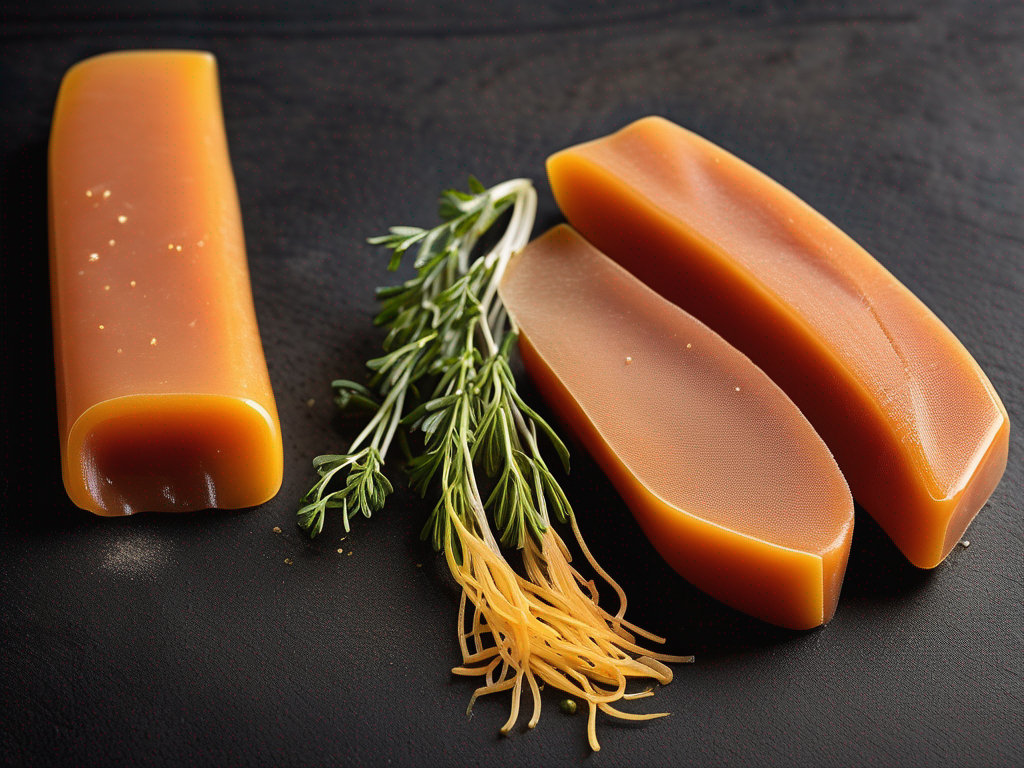
The Best Way to Store Bottarga for Freshness
Get Your Free Food Safety Cheat Sheet
30 most common foods with instant answers. Print it and stick it on your fridge—completely free!
The Best Way to Store Bottarga for Freshness
Bottarga, also known as the "poor man's caviar," is a delicacy made from the salted and cured roe of grey mullet or tuna. It has a unique flavor profile and is a popular ingredient in Mediterranean cuisine. Proper storage is crucial to maintain the quality and freshness of bottarga. In this blog post, we will explore the best practices for storing bottarga to ensure it stays fresh for as long as possible. (Bottarga)
Understanding Bottarga
Before delving into storage tips, it's essential to understand the characteristics of bottarga that make it susceptible to spoilage. Bottarga is a perishable product that can deteriorate quickly if not stored correctly. Factors such as exposure to air, light, moisture, and fluctuating temperatures can all impact the quality and flavor of bottarga.
Why Proper Storage is Important
Proper storage is essential for preserving the flavor, texture, and shelf life of bottarga. By following the right storage guidelines, you can prevent spoilage, off-flavors, and bacterial growth, ensuring that your bottarga remains fresh and safe to consume.
Best Practices for Storing Bottarga
Here are some practical tips for storing bottarga to maintain its freshness and quality:
1. Vacuum Sealing
- Vacuum sealing is one of the most effective methods for preserving bottarga. By removing air from the packaging, you can prevent oxidation and extend the shelf life of the product.
2. Store in a Cool, Dark Place
- Keep bottarga in a cool, dark place away from direct sunlight and heat sources. Exposure to light and heat can cause the roe to spoil quickly. A pantry or a refrigerator is an ideal storage location.
3. Use Airtight Containers
- Store bottarga in airtight containers to protect it from moisture and air exposure. Make sure the container is clean and dry before placing the bottarga inside.
4. Avoid Freezing
- Avoid freezing bottarga unless necessary. Freezing can affect the texture and flavor of the roe. If you must freeze bottarga, ensure it is properly wrapped to prevent freezer burn.
5. Check for Signs of Spoilage
- Regularly inspect the bottarga for any signs of spoilage, such as off smells, mold growth, or discoloration. If you notice any of these signs, discard the product immediately.
Safety Precautions
When handling and storing bottarga, it's essential to follow safety precautions to prevent foodborne illnesses and ensure food safety:
- Wash your hands thoroughly before and after handling bottarga.
- Use clean utensils and surfaces to prevent cross-contamination.
- Avoid consuming bottarga that has an unusual odor, color, or texture.
- Follow any storage instructions provided by the manufacturer for optimal shelf life.
Conclusion
Proper storage is key to maintaining the freshness and quality of bottarga. By following the tips outlined in this blog post, you can ensure that your bottarga remains delicious and safe to consume. Remember to store bottarga in a cool, dark place, use airtight containers, and avoid freezing whenever possible. By taking these simple steps, you can enjoy the unique flavors of bottarga for longer periods. (Bottarga)

Authoritative Food Safety References
These agencies and university labs inform every tip and health precaution we publish.
USDA FoodKeeper – Cold Storage Guidelines
Official refrigerator, freezer, and pantry timelines maintained by the U.S. Department of Agriculture.
Visit USDA FoodKeeperFDA Produce Safety Rule & Grower Guidance
Field-to-fridge handling practices that prevent contamination of fruits, vegetables, and leafy greens.
Visit FDA Produce SafetyCDC Foodborne Illness Prevention Hub
Surveillance-backed guidance on pathogens, symptoms, and steps to reduce foodborne illness risk.
Visit CDC Food SafetyUC Davis Postharvest Technology Center
University research detailing optimal storage atmospheres for produce after harvest.
Visit UC Davis PostharvestPenn State Extension – Home Food Preservation & Safety
Peer-reviewed extension bulletins on safe canning, chilling, and reheating practices.
Visit Penn State ExtensionCan bottarga be frozen for long-term storage?
How long can I keep opened bottarga before it spoils?
Can bottarga be stored at room temperature?
How can I tell if my bottarga has gone bad?
Get Your Free Food Safety Cheat Sheet
30 most common foods with instant answers. Print it and stick it on your fridge—completely free! Want more? Upgrade to the complete guide with 70+ foods.
Scan your food directly and get instant safety info using our AI-powered camera feature.